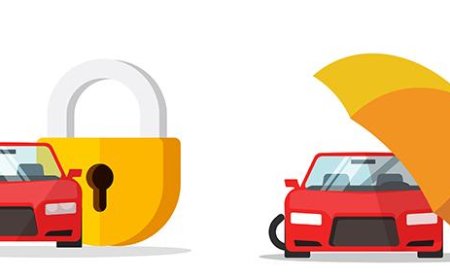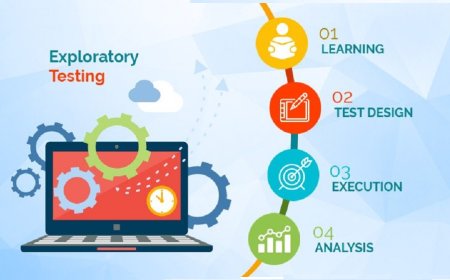The Floating Journal: Letting Your Words Sail Freely
Discover the freedom of expression with The Floating Journal. A creative space where your thoughts, stories, and emotions drift into meaningful writing.

In todays evolving educational landscape, one concept that has been gaining attention for its capacity to nurture critical thinking, empathy, and authentic engagement is the floating journal. As the name suggests, a floating journal is a shared notebook or digital space where students pass entries among themselves, each adding thoughts, reflections, questions, or creative responses. It serves not only as an outlet for free expression but as a collaborative tool that echoes the benefits of cooperative learning roles.
Much like a message in a bottle, the floating journal lets ideas drift across student minds, weaving connections and cultivating understanding in ways that are both spontaneous and deeply personal. When guided properly, this practice becomes a powerful platform to explore complex educational strategies and interpersonal dynamics, especially those tied tocooperative learning roles.
Understanding Cooperative Learning Roles
Before diving further into how the floating journal complements collaboration, its crucial to define cooperative learning roles. These roles are structured assignments given to group members to ensure active participation and shared responsibility in a learning task. Some common roles include the Facilitator, Recorder, Timekeeper, Reporter, and Encourager. Each role supports the groups function by distributing tasks and encouraging different dimensions of student leadership and accountability.
The floating journal naturally aligns with these roles. For instance, one student might act as the Recorder, capturing the main points of the groups collective thinking in the journal. Another might be the Encourager, adding affirmations or asking thoughtful questions to prompt deeper reflection. With roles rotating regularly, students experience different perspectives and responsibilities, enhancing their social-emotional and academic development.
Power of Expressive Collaboration
The brilliance of the floating journal lies in its open-ended nature. It doesnt demand polished essays or rigid responses; instead, it thrives on raw thought, honest emotion, and authentic voice. Within this flexible framework, cooperative learning roles offer a subtle but essential structure. They ensure the journal doesnt lose direction while allowing enough freedom for creativity to flourish.
When a group of students engages in a floating journal, each entry becomes a metaphorical sail catching the wind of a different students perspective. The Facilitator might introduce a question or prompt related to a current lesson. The next student, acting as the Clarifier, might connect that idea to their personal experience or rephrase it for clarity. The following student, perhaps the Summarizer, could distill the previous points and add their insights. This sequence builds not only content understanding but a community of trust and respect.
This interplay supports what educational theorists have long suggestedthat students learn better in social contexts where they feel heard and valued. It is not just a technique; it is a mindset. By embedding cooperative learning roles into journaling, educators can bridge the gap between individual introspection and collective meaning-making.
Building Empathy and Voice
Another critical advantage of the floating journal is its capacity to build empathy. When students read and respond to their peers journal entries, theyre engaging in an act of listening. This active listening fosters an appreciation for diverse perspectives and lived experiences. In a time when classroom inclusivity and social cohesion are more vital than ever, such a tool is indispensable.
By assigning specific cooperative learning roles, teachers can make this process more intentional. The Connector, for example, might be tasked with linking journal entries to real-world events or shared classroom experiences. The Challenger might respectfully pose alternative viewpoints, helping others see beyond their immediate assumptions. These roles scaffold the practice of constructive dialoguesomething far more powerful than a simple exchange of ideas.
Moreover, the floating journal amplifies student voice. Often, traditional classroom discussions are dominated by a few confident individuals. However, the journal provides a quieter space for those who may not feel comfortable speaking up. When guided by cooperative principles, every student has a chance to lead, to reflect, and to be acknowledged. This democratization of voice is vital in promoting equitable education.
Adapting to Diverse Learning Needs
One of the most important considerations in any educational practice is its adaptability to different learners. The floating journal excels in this regard. Whether students are visual thinkers, verbal processors, or hands-on learners, journaling offers multiple entry points. And when paired with thoughtful cooperative learning roles, the process can be differentiated to suit individual strengths.
For instance, a student who excels in organization might take on the Timekeeper or Task Manager role, ensuring entries are timely and coherent. A student who prefers drawing over writing might add visual elements to an entry, serving as the groups Visualizer. By recognizing and leveraging these preferences, teachers can align the floating journal practice with diverse learning styles strategies, enhancing engagement and comprehension without isolating or labeling students.
This alignment ensures that all learnersregardless of their primary mode of understandingcan participate meaningfully. It also strengthens the social-emotional bonds in the classroom, as students come to appreciate each others unique ways of thinking and communicating.
Integration Across Subjects and Grade Levels
While the floating journal is often associated with language arts, its applications span all subject areas. In science, students might use the journal to reflect on experiments, hypothesize outcomes, or debate ethical dilemmas related to technology. In social studies, journal entries could explore historical empathy, cultural perspectives, or contemporary issues. Even in math, students might reflect on problem-solving processes, explain reasoning, or pose challenging questions.
Regardless of the subject, cooperative learning roles provide the necessary framework to keep the journal collaborative and purposeful. A student acting as the Synthesizer might tie together ideas across disciplines. Another, playing the Devils Advocate, might challenge oversimplified conclusions, prompting deeper thought.
The beauty of the floating journal lies in this versatility. It is not bound by content area or age group. With proper scaffolding and role integration, it can be as effective with elementary students exploring story structure as it is with high schoolers debating global policy.
Practical Tips for Educators
To implement the floating journal effectively, educators should consider the following steps:
-
Establish Clear Expectations: Define what types of entries are encouraged and how often students should write. Introduce cooperative learning roles early and rotate them regularly.
-
Use Prompts Strategically: While open-ended entries are valuable, occasional prompts can anchor discussion around curricular goals.
-
Model Thoughtful Responses: Show students how to engage with previous entries respectfully and thoughtfully. Demonstrate how different roles can be fulfilled in writing.
-
Incorporate Technology When Appropriate: Digital platforms like Google Docs, Padlet, or classroom blogs can facilitate the floating journal in hybrid or online settings.
-
Assess Process, Not Just Product: Focus on participation, engagement, and growth rather than grammar or polished prose.
Conclusion
In essence, the floating journal is more than a notebook; its a living conversation, a collective mind, and a vessel for personal and intellectual growth. When paired with thoughtfully assignedcooperative learning roles, it becomes a mirror of the classroom community, reflective, dynamic, and full of possibility.
Related Posts
Corporate Training in Chennai
aathi11 Jul 15, 2025 4
Best BBA College in Meghalaya | MIT University
MIT Shillong Jul 15, 2025 2





























